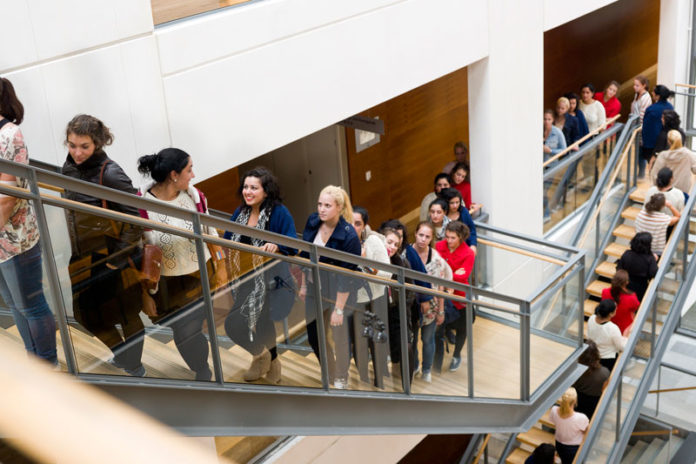Even if the border were sealed tomorrow and the flood of illegal immigrants from Mexico and Central America reduced to a trickle, U.S. immigration courts face a backlog 445,000 cases that even the most optimistic estimates say will take four years to eliminate according to the Transactional Records Access Clearinghouse at Syracuse University.
This number doesn’t include illegal immigrants that U.S. authorities do not know about… only includes reported cases through April, 2015… and ignores the coming waves of immigrants expected to arrive through chain migration of relatives – fathers, mothers, sons, daughters, aunts, uncles and others seeking to join family members already living in the United States.
The acute backlog began during the last fiscal year when than 68,500 unaccompanied children and another 70,000 families who crossed the southern border from Central America.
During the surge, courts gave unaccompanied children’s cases priority and expedited them through Los Angeles and other cities along across the country.
And while the majority of unresolved cases involve Mexican nationals, the backlog has exploded for Central American nationals including a 63% increase for Guatemalans, 92% for Salvadorans and 143% for Hondurans.
The report, based on federal data, found that California, Texas, and New York led the nation with the largest immigration backlogs, followed by Florida and New Jersey. The case backlog has been building for years and immigration courts are attempting to deal with the problem through increased staffing.
Right now, the backlog is the responsibility of 233 immigration judges in 58 courts nationwide. 17 more judges will start by the end of May with another 68 more in the pipeline according to Louis Ruffino, spokesman for the Executive Office for Immigration Review at the Justice Department, the office that handles immigration cases.
Still, illegal immigrant special pleaders say it is not enough.
Denise Gilman, Director of an immigration clinic at the University of Texas law school in Austin said between newly arrived and expedited cases involving unaccompanied children and the retirement of experience judges, “There is no ability of the court to keep up”…“We really are in a vicious cycle.”
Jonathan Ryan, executive director of the illegal immigrant advocacy group Raices said the decision by the federal government to give priority to unaccompanied children and detained families means:
“…they were not addressing the cases that make up almost all of the backlog.” “We see people coming into our office every day whose lives are being negatively impacted by this…”
Ryan said one Syrian family “is in a state of paralysis or suspense because they can’t move forward in the backlog.” “The people being prioritized in the backlog are the most vulnerable children and mothers who are essentially getting railroaded. The prioritization is backwards.”
San-Francisco-based immigration Judge Dana Leigh Marks, who serves as president of the National Association of Immigration Judges, expects 100 immigration judges to retire this year.
“If you look at how difficult the working conditions become when you are so overworked and not given the support that you need, it makes sense that what happens is people retire at their earliest opportunity…” “That is really tragic for the country because these are skilled people.”
“The pace of these cases continues to be relentless, particularly as the administration has chosen to prioritize recent arrivals…” “It means that my pending caseload just gets pushed to the back, which is problematic in its own right because often there are compelling issues in those cases.”
“People lose track of witnesses, a qualifying relative may pass away or become an adult, where it’s required the person be a child to confer a benefit.”
At the end of the day, the backlog means some cases will be delayed to 2019 assuming the increase in staffing continues apace and resources are available of processing and placement.
It is not known whether those who say securing the border is not possible, practical or too expensive, include the cost incurred and the human misery generated by the “open border anything goes” wild west alternative currently in play.































